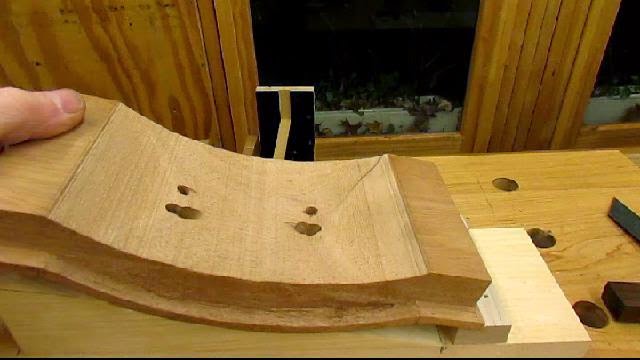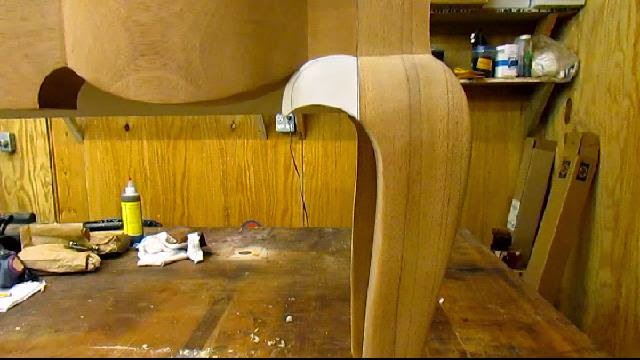But....... Tim Garland, a professional furniture restorer in the UK made other suggestions. Tim offered to finish the piece but he is located in the UK, which is a bit far to ship the table. He asked how I was going to finish the table and then politely suggested that there may be better processes which he provided. The methods he described could produce a more period like finish with chemical stains, shellac and colored waxes.
I was game to learn new finishing processes. I have studied processes and classes by Jeff Jewitt and Bob Flexner but had never come across these techniques. Tim suggested reading Sam Allen's Classic Finishing Techniques. This is an excellent book on period finishing.
So here we go. I started by sanding the test board which was cut off from the table top to 220 grit.
Then with warm water, I used a rag to wet the surface. I let it dry over night, I don't think you would have to wait that long but it was the end of the day for me.
The next day I sanded it with 320 grit sand paper and vacuumed off the dust. I lightly sanded just knocking off the fuzzy grain. I used a rubber sanding block and did it by hand.
Then I did it again by re-wetting the surface with warm water, waited until it dried and then sanded it off again.
I vacuumed up the dust. Now I was ready to apply the chemical stain. In this case, it was Potassium Dichromate crystals dissolved in water. I used 4 oz. of crystals in 24 oz. hot water. While the solution was still warm, I used a rag to wipe on the solution. I used rubber gloves and a mask.
It looked good going on and the picture above is about 5 minutes after it had been applied. I expected it to turn dark and look similar to the picture.
As it turned out it turned a powdery yellow brown and it looked terrible. I emailed Tim figuring I had done something wrong. But as it turns out everything was ok. I sanded off the yellow dust with a white scotch plastic abrasive pad. Similar to 0000 steel wool.
This is what it looked like after that. A dull yellow brown. You can see a couple of spot where I dripped some water drops from my gloves. But that is why I practice.
If I wanted it darker I could have applied it again. But I decided to go to the next step which is to seal it with a 1 to 2 lb. cut of dark shellac. I don't brush shellac, I spray it. So, I sprayed two coats of 1 1/2 lb dark shellac.
Much Better. :-)
Next steps are to fill with a hard colored wax. That will be in the next post.
Here is today's video:






















































